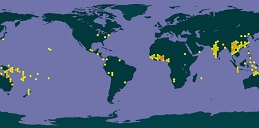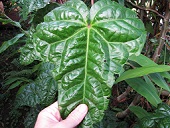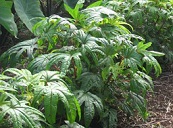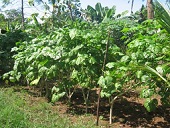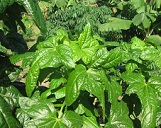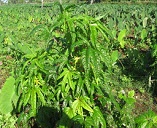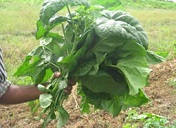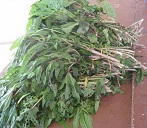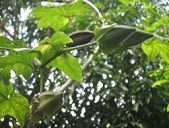| Sunset hibiscus - Abelmoschus manihot | |||||||||||||||||||||||||||||||||
|---|---|---|---|---|---|---|---|---|---|---|---|---|---|---|---|---|---|---|---|---|---|---|---|---|---|---|---|---|---|---|---|---|---|
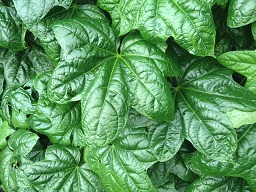 Fig. 1  Malvaceae, edible hibiscus, Tongan spinach (Abelmoschus manihot) 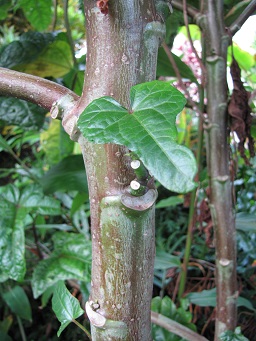 Fig. 2  A. manihot Leaves and stem, Hawai'i  Fig. 3  Leaves, Hawai'i 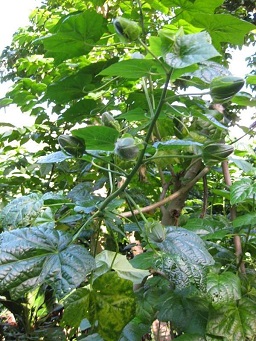 Fig. 4  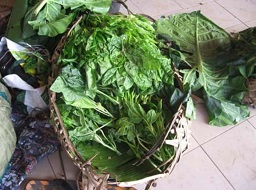 Fig. 9  Pele leaves wrapped in banana leaves for sale at Port Vila market, Vanuatu 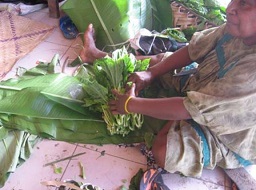 Fig. 10  Wrapping pele leaves in banana leaves for sale at Port Vila market, Vanuatu 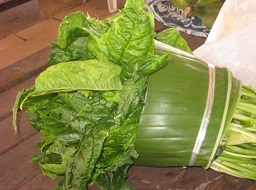 Fig. 11  Well presented island cabbage bundle, Vanuatu 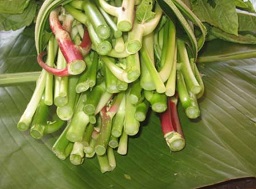 Fig. 12  Well presented island cabbage bundle at Port Vila market, Vanuatu  Fig. 13  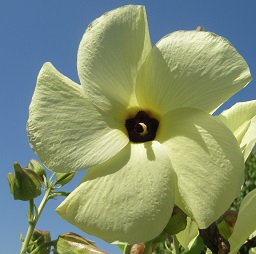 Fig. 14  Aibika | Scientific
name Abelmoschus manihot (L.) Medik. 1 Common names English: bush cabbage, manioc-hibiscus, slipery kabis, sunset hibiscus, sunset muskmallow, Tongan spinach, edible hibiscus; Cook Islands: raukau viti; Fiji: bele, mbele; Germany: Maniok-Bisameibisch; New Guinea: aibika; Simbo: neka; Solomon Islands: aibika, island cabbage, baera, bush spinach, peli, slippery cabbage; Samoa: lau pele; Sweden: solokra; Tonga: pele; Transcribed Korea: hwangchokgyu 1,4 Synonyms A. manihot var. manihot, Hibiscus manihot 2,3 Relatives Cotton, Gossypium spp.; cranberry hibiscus, false roselle, H. acetosella; Indian hemp, kenaf, H. cannabinus; okra, A. esculentus; roselle, H. sabdariffa Family Malvaceae (mallow family) Origin Tropical and temperate Asia 1 USDA hardiness zones 8-10 3 Uses Young leaves, stem tips as a cooked green vegetable; ornamental; medicinal 4 Height 3-6 ft (1-1.8 m) 3 Spread 2-3 ft (0.5-1 m) 3 Plant habit Shallow rooted shrub; erect, woody, branching stem 4 Growth rate Fast Life cycle Herbaceous annual or perennial 3 Leaves Variable between varieties Flowers Large, pale yellow with a maroon eye 3 Days to harvest 80 to 90 days 4 Soil tolerance Moderate to high fertility 4 pH preference Low (<4 dS/m) 4 Soil depth 20-60 in. (50-150 cm) 4 Yield May vary from 10-60 t/ha (1-6 kg/m) 4 Light requirement/photo period Full sun, long day (>14 hours) 4 Water requirement Irrigate during dry periods 4 Temperature requirement Optimal: 72-86 °F (22-30 °C); absolute: 61-97 °F (16-36 °C) 4 Invasive potential * None reported Pest resistance Deer tolerant 3 Reading Material Aibika, Australian Centre for International Agricultural Research pdf Origin A native of Southeastern Asia, where it grows in grasslands, stream banks, and disturbed sites. 3 Native to China, Bhutan, India, Nepal, Pakistan, Papua New Guinea, Myanmar, Thailand, Indonesia, Malaysia, Philippines. Cultivated in China, Japan, India, Papua New Guinea, Solomon Islands, Indochina, Indonesia, Vanuatu. 1 Genus name is believed to come from the Arabic abu-l-mosk in reference to the smell of the seeds. The specific epithet manihot refers to the genus Manihot. The common name muskmallow refers to the seeds, which have a musky odor and have been used in perfumery. 3
Fig. 5. A. manihot (L.) Medik. Map showing 1,145 georeferenced records showing human observations, preserved specimens and living specimens between 1802 and 2018. Fig. 6. Specimen, A, Manihot (L.) Medik. Edible hibiscus Description Sunset hibiscus grows well in containers. It is easily grown in moist, well-draining, loamy soils in full sun. It can be cut to the ground in winter and allowed to rejuvenate. Requiring regular fertilizing and irrigation/rainfall, it can grow fast, especially when conditions are ideal. Leaves The largest, widest leaves form at the base of the plant, where there may be some small side branches. The leaves of sunset muskmallow are edible, and impart a mucilaginous texture to dishes when cooked. 3 Some are heart shaped, some spear shaped, and some are palmate with 3, 5 or 7-lobed similar to the maple leaf, but often more deeply cut. 5
Fig. 7. A. manihot leaves, Hawai'i Fig. 8. A. manihot habit, Hawai'i Flowers Blooms from July to frost. 3 The blooms (4-5" in diameter) are pale yellow with a dark maroon to purple center eye, and emerge from the terminal end of a central flowering stalk. Attractive to butterflies and other pollinators. 3
Fig. 15. A. manihot (L.) Medik Fig. 16,17 Sunset hibiscus Varieties The Island Cabbage in all five countries [Fiji, Vanuatu, Samoa, Cook Islands and Tonga] is not known by named varieties, but rather by leaf form and leaf color. Island cabbage is open pollinated, and there are numerous varieties as noted by varying leaf shapes and color. Vanuatu for instant has over 70 different varieties being tested by the Department of Agriculture and Rural Development [2009]. However, on the farmer’s fields in the five countries, three main types are grown. These are: • Round to slightly lobed green leaf, (sometimes referred to as white), very soft and nice texture when cooked; • Deeply lobed and palmate leaves, tend to be more tough and fibrous when harvested late; and • A hybrid of reddish stems and leaf stalks with green leaves. 6
Fig. 18. Red stems and stalks, green leaves Fig. 19. Round to slightly lobed, green leaves Fig. 20,21. Deeply lobed and palmate leaves Harvesting There are two main ways of harvesting: Picking of individual leaves, breaking it off from the leaf stalk. Cutting off the terminal stem, 6-8 leaves below the terminal bud. This technique will encourage growth of new branches and more leaves. Harvesting could be repeated up to eight times or more depending on the health of the plant, before replanting again of new crop. The leaves are picked for cooking and the stems are used for planting materials. 6
Fig. 22,23. Farmer harvesting of terminal pele stems with leaves still attached Fig. 24. Bundles of island cabbage (pele), Nausori market, Fiji Fig. 25. Bundles of pele, Talamahu market, Tonga Storage The leaves and tips should be washed carefully with water of drinking quality or clean seawater. They can be loosely bundled in damp paper, and if kept cool, should store for a day. If placed in an airtight container in a cool room or refrigerator, they can store for two or three days. 7 Propagation Seed-derived plants are usually slower to establish and may vary from the parent plant. Cuttings of mature wood, 8-24 in. (200-600 mm) long, are the most suitable for propagation, and should be planted with at least one third under the soil surface. Cuttings can be stored or transported for a few days provided they are kept in the shade, and in a little water, which should be regularly changed to reduce the possibility of stem rots. 7 Seed Fruits are beaked, oblong and dehiscent capsule containing numerous pubescent seeds. 6
Fig. 26. Maturing fruit capsules Planting It is best grown at elevations below 500 m, between 500-1200 m yields may be reduced and the plant may develop an annual habit. 4 Irrigation It requires good even rainfall distribution for fast, lush and green growth. It does not do well in dry sites, with the leaves rather leathery appearance and fibrous. 6 Pests/Diseases This plant is closely related to okra (A. esculentus), and is susceptible to similar pests including aphids, slugs, and white flies. 3 Food uses The leaves and short succulent tips can be eaten raw but are usually cooked. Pele leaves is a favorite green vegetable or spinach for indigenous people, particularly in Vanuatu, Fiji and Tonga. The leaves are boiled, baked or steamed in coconut milk together with meat. Over boiled leaves will give a slimy/mucilage appearance which is a character of the hibiscus family hence sometimes referred to as “Slippery cabbage”. 6 Nutritional value Extremely nutritious, 12% protein by dry weight, very high in vitamins A and C, and iron. 5 Aibika, Australian Centre for International Agricultural Research pdf Medicinal Properties ** Aibika (and most other cooked leaves) is ideally served with coconut cream, which increases the uptake of beta-carotene and conversion to vitamin A. Traditionally aibika has medicinal uses such as treating sore throats, stomach aches, diarrhoea, increasing milk production, and preventing bone loss. 7 Other Uses Materials: gum/resin, mucilage used in China and Japan to size paper. 1 Other Edibles in the Malvaceae family: Okra, Abelmoschus esculentus Roselle, Hibiscus sabdariffa not to be confused with false roselle, H. acetosella Further Reading Edible Hibiscus (Abelmoschus manihot), Tropical Plant Society of Denver Mallow Madness, Eat The Weeds Top 10 Nutritious Leafy Vegetables in the Pacific, Australian Centre for International Agricultural Research Botanical Art List of Growers and Vendors | ||||||||||||||||||||||||||||||||
| Bibliography 1 "Taxon: Abelmoschus manihot (L.) Medik." USDA, Agricultural Research Service, National Plant Germplasm System, Germplasm Resources Information Network (GRIN-Taxonomy), National Germplasm Resources Laboratory, Beltsville, Maryland, 2019, U.S. National Plant Germplasm System, npgsweb.ars-grin.gov/gringlobal/taxonomydetail.aspx?id=621. Accessed 22 Aug. 2019. 2 "Synonyms for Abelmoschus manihot (L.) Medik." The Plant List (2013), Version 1.1, www.theplantlist.org. Accessed 22 Aug. 2019. 3 "Abelmoschus manihot." Plant Finder, Missouri Botanical Garden, www.missouribotanicalgarden.org/PlantFinder/PlantFinderDetails.aspx?taxonid=368543&isprofile=0&=. Accessed 25 Aug. 2019. 4 "Abelmoschus manihot." Ecocrop, Food and Agriculture Organization of the United Nations, FAO, ecocrop.fao.org/ecocrop/srv/en/dataSheet?id=290. Accessed 22 Aug. 2019. 5 "Malvaceae Edible hibiscus, Tongan spinach (Abelmoschus manihot)." Windward Community College, University of Hawai'i, windward.hawaii.edu/Plant_Biotechnology/Plants.php. Accessed 27 Aug. 2019. 6 Haniteli’O. Fa’Anunu. "Report On The Application For Market Access Of Island Cabbage (Abelmoschus Manihot). From Fiji, Vanuatu, Samoa, Cook Islands And Tonga To New Zealand." FAO Sub-Regional Office For The Pacific Islands, 28 Aug. 2009, Food and Agriculture Organization of the United Nations, www.fao.org/3/a-an430e.pdf. Accessed 24 Aug. 2019. 7 Goebel, R., et al. "Aibika, Leafy Green Vegetables in the Tropics." Top 10 nutritious leafy vegetables in the Pacific, PC/2010/063, Australian Centre for International Agricultural Research, 15 July 2013, aciar.gov.au/News2013July. Accessed 18 Aug. 2017. Photographs Fig. 1 "Malvaceae Edible hibiscus, Tongan spinach (Abelmoschus manihot)." Windward Community College, University of Hawai'i, windward.hawaii.edu/Plant_Biotechnology/Plants.php. Accessed 27 Aug. 2019. Fig. 2 Starr, Forest and Kim. "Abelmoschus manihot (Edible hibiscus, Tongan spinach, sunset muskmallow) Leaves and stem. Pali o Waipio, Maui, Hawai'i." no. 121108-0686, Nov. 08 2012, Starr Environmental, (CC BY 4.0), www.starrenvironmental.com/images/image/?q=25102588301. Accessed 24 Aug. 2019. Fig. 3 Starr, Forest and Kim. "Abelmoschus manihot (Edible hibiscus, Tongan spinach, sunset muskmallow) Leaves. Waihee, Maui, Hawai'i." no. 130221-1610, Feb 21 2013, Starr Environmental, (CC BY 4.0), www.starrenvironmental.com/images/image/?q=25205850755. Accessed 24 Aug. 2019. Fig. 4 Moorea Biocode. "Image of Abelmoschus manihot (L.) Medik." 2010, Encyclopedia of Life, (CC BY-NC-SA 3.0), eol.org/media/10085617. Accessed 23 Aug.2019. Fig. 5 "Abelmoschus manihot (L.) Medik. Map 1802-2018" Global Biodiversity Information, © OpenStreetMap contributors, © OpenMapTiles, GBIF, (CC BY-SA 2.0), Image cropped, www.gbif.org/species/3152706. Accessed 23 Aug. 2019. Fig. 6 Lange, Ronald. "Abelmoschus ? Manihot (L.) Medik. Edible Hibiscus." Cultivated Plants of Florida, University of Florida Herbarium (FLAS), 2 Dec. 2013, SEINet, (CC BY-NC 3.0), swbiodiversity.org/seinet/collections/individual/index.php?occid=16078312. Accessed 24 Aug. 2019. Fig. 7 Starr, Forest and Kim. "Abelmoschus manihot (Edible hibiscus, Tongan spinach, sunset muskmallow) Leaves. Pali o Waipio, Maui, Hawai'i." no. 121108-0685, Sept. 06 2007, Starr Environmental, (CC BY 4.0), www.starrenvironmental.com/images/image/?q=25195855695. Accessed 24 Aug. 2019. Fig. 8 Starr, Forest and Kim. "Abelmoschus manihot (Edible hibiscus, Tongan spinach, sunset muskmallow) Habit. Pali o Waipio, Maui, Hawai'i." no. 121108-0681, Nov. 08 2012, Starr Environmental, (CC BY 4.0), www.starrenvironmental.com/images/image/?q=25102588301. Accessed 24 Aug. 2019. Fig. 9,10,11,12,18,19,20,21,22,23,24,25,26 Haniteli’O. Fa’Anunu. "Report On The Application For Market Access Of Island Cabbage (Abelmoschus Manihot) From Fiji, Vanuatu, Samoa, Cook Islands And Tonga To New Zealand." FAO Sub-Regional Office For The Pacific Islands, 28 Aug. 2009, Food And Agriculture Organization Of The United Nations, www.fao.org/3/a-an430e.pdf. Accessed 24 Aug. 2019. Fig. 13 Nikam, Satish. Abelmoschus manihot (L.) Medik." iNaturalist Research-grade Observations, Global Biodiversity Information Facility, India, 20 Oct. 2014, GBIF, (CC BY-NC-SA 2.0), www.gbif.org/occurrence/2282994169. Accessed 23 Aug.2019. Fig. 14 Rulkens, Ton. "Aibika, Abelmoschus manihot." 8 Nov. 2010, Flickr, (CC BY-SA 2.0), flickr.com/photos/47108884@N07/5171146007/. Accessed 23 Aug.2019. Fig. 15 Nikam, Satish. "Abelmoschus manihot (L.) Medik." iNaturalist Research-grade Observations, Global Biodiversity Information Facility, India, 20 Oct. 2014, GBIF, (CC BY-NC-SA 2.0), www.gbif.org/occurrence/2282994169. Accessed 23 Aug.2019. Fig. 16 Valke, Dinesh. "Sunset Hibiscus." 20 Sept. 2008, Flickr, (CC BY-SA 2.0), www.flickr.com/photos/dinesh_valke/2874813179/. Accessed 24 Aug. 2019. Fig. 17 Valke, Dinesh. "Abelmoschus manihot." 6 Nov. 2010, Flickr, (CC BY-SA 2.0), www.flickr.com/photos/dinesh_valke/2874813179/. Accessed 24 Aug. 2019. * UF/IFAS Assessment of Non-native Plants in Florida's Natural Areas ** The information provided above is not intended to be used as a guide for treatment of medical conditions using plants. Published 24 Sept. 2019 KJ. Last update 25 May 2020 KJ | |||||||||||||||||||||||||||||||||
